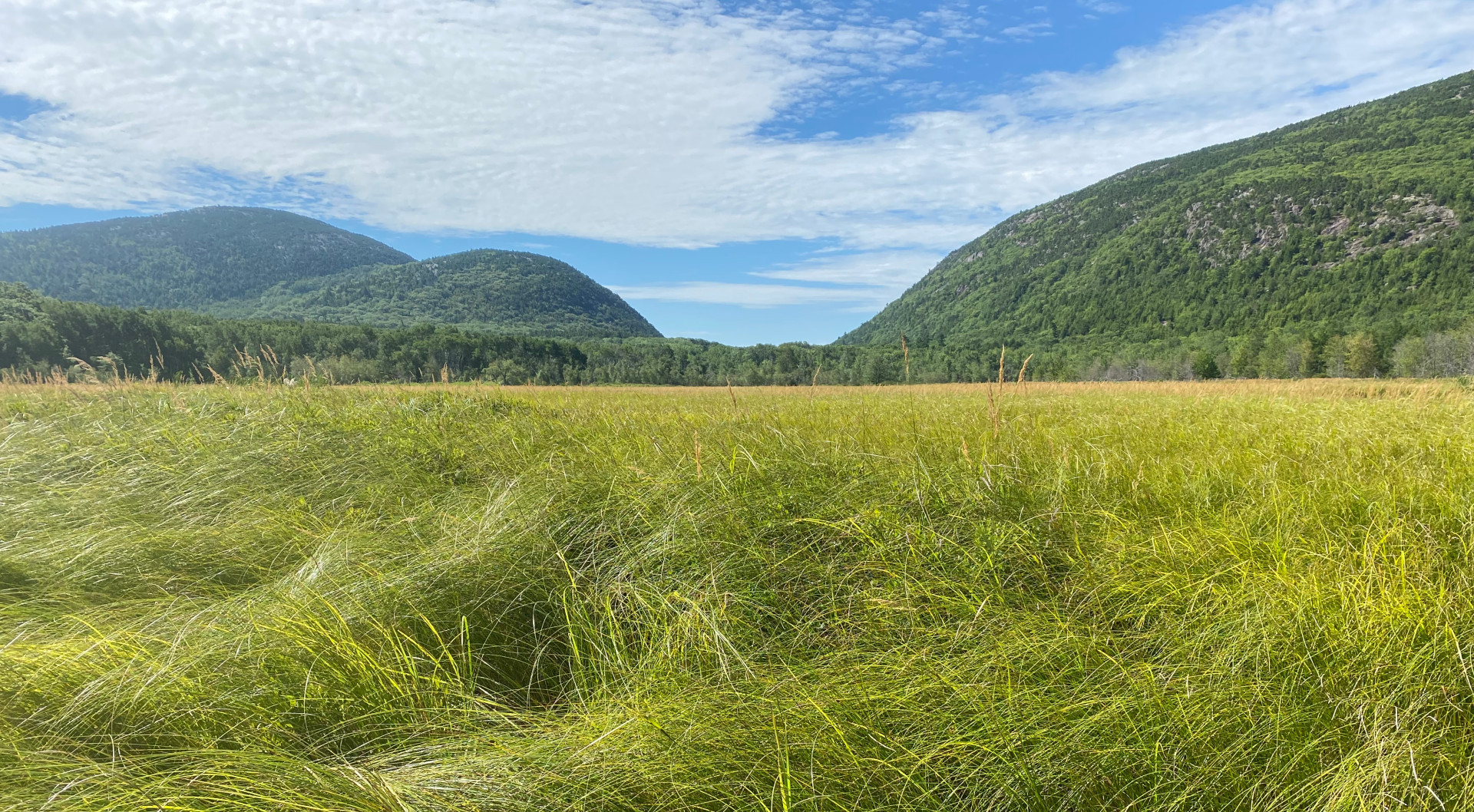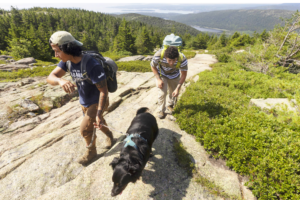Via Park Science magazine
Friends of Acadia’s Lauren Gibson and Acadia National Park’s Jason Flynn recently co-authored an article for Park Science magazine outlining the “why” and work to restore Great Meadow in Acadia.
Below are excerpts from the article (Read the full article)
Located in a glacially carved, u-shaped valley, the Great Meadow is filled with shallow marsh grasses, alder and sweetgale shrubs, and red maple trees. Monitoring data show that most of the wetlands in Acadia are in good condition, but the Great Meadow isn’t. Invasive plants, hydrological (water-flow) disruptions, and stressors like trails, culverts, and roads have diminished its wetland functions.

Great Meadow, Acadia National Park. Credit: NPS Photo
Compromised Capacity
When summer park visitors walk out onto the dry and cracked soils of Great Meadow, it’s plain to see that something is wrong. In its current state, the wetland doesn’t respond naturally to rain events. Past ditching and channelization of Cromwell Brook, the wetland’s main waterway, causes the wetland to drain faster, reducing its holding capacity. Trails and abandoned roads that bisect the wetland impede the natural flow of water, creating drought conditions during dry periods and extended flooding during heavy rain or snow. These extreme fluctuations in water level threaten the park’s historic and natural resources. They favor disturbance-tolerant plants, reducing the diversity of species in the wetland. And they reduce recreational access and compromise visitor safety.
Back to Nature, by Design
With federal funding from the Bipartisan Infrastructure Law, the park and its partners hired an engineering firm to help them understand the downstream impacts from wetland restoration and a new culvert design, particularly on Bar Harbor. The engineers’ model incorporated existing point data from the park’s rain gauge, continuous historic stream flow data, wetland water-level measurements, and topographic LiDAR and survey data. It used U.S. Army Corps of Engineers Hydraulic Engineering Center River Analysis software to extrapolate these discrete results to the entire watershed.
This enabled park staff to compare water levels in the Great Meadow to those downstream of the new culvert for different culvert configurations and restoration methods. Our goal was to select a road crossing that reduced peak flooding in Sieur de Monts, prevented damage to historic structures, and avoided impacts to infrastructure outside the park. The engineers used an iterative design process for creating the new culvert, where they repeatedly tested, analyzed, and refined successive prototypes until the design met the desired specifications.
They concluded that the best solution would be a 12-foot box culvert with a 10-foot stream-simulation bottom. The stream-simulation bottom would mimic a natural channel so that fish and other aquatic animals could cross through easily. The flow through the channel would match the existing peak flow downstream.
The structure would enable the wetland to retain water in smaller rain events (the old culvert allowed the wetland to drain) and permit the controlled release of water from the wetland during heavier rain, preventing downstream flooding.
Serving the Public
Restoring the Great Meadow doesn’t mean recreating the wetland that existed before Dorr bought the land. We’re not returning it to some historic state. It’s about creating conditions for the wetland to naturally rebuild its own functions and resiliency and preventing catastrophic downstream impacts. In order to do that, we have worked to understand its existing conditions, its stressors, and how change will affect it. This work, strengthened by partnerships and realized through structural changes made with the help of the infrastructure funding, benefits local Mount Desert Island communities and park visitors.
The Great Meadow wetland restoration project will also help reduce overall park costs. Year after year, the park cleaned the undersized, clogged culvert in Great Meadow, but we couldn’t do it before every storm. As storms became more frequent and intense, damage to historic structures and recreational assets increased. Investing in more appropriate infrastructure for the wetland through recent federal funding will save on long-term operation and maintenance costs for buildings, roads, and trails.
Read the full article in Park Science magazine
 Join
Join Donate
Donate Acadia National Park
Acadia National Park


